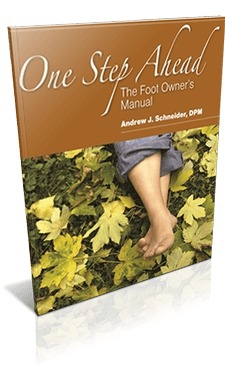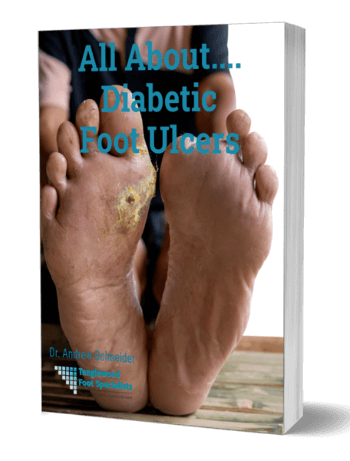Here's a tough question: should you wear shoes in the house? By now, we hope that all of our readers know not to go barefoot outside of the home. Whether you’re running through the grass, heading into the locker room or about to dive into the community pool, shoes are a must outdoors: they protect you from cuts, scrapes, germs and that most feared entity: foot fungus!
So…that’s a given. But what about in the comfort of our own homes? After all, your own home is obviously spotless, right? Or, at the very least, the germs in it are your own, so you shouldn’t be facing too much of a risk…or are you? Today, we'll take a closer look at the Dos and Don’ts of going barefoot in your own house. But we'll get to that at the end of this post. First, let's review the risks of walking barefoot, whether at home or on the go.
Should You Wear Shoes in the House? 3 Reasons to Always Cover Bare Feet
Should you wear shoes in the house? Absolutely, if you want to avoid foot pain, injury and infection. You see, according to a recent report in Glamour UK, cases of plantar fasciitis are on the rise, largely due to people going barefoot at home. Now, freeing your feet from shoes can help take pressure of the bones, ligaments and muscles that may be restricted by your footwear. However, those benefits are outweighed by the stress of walking around without support, meaning you can free up your feet when you're sitting or lying down, but not when you're walking around your home. Want to help prevent problems? Today, we're reviewing three problems you can develop if you walk around in bare feet. (P.S.: that means you can also prevent them by wearing shoes at home!) 
1. Athlete’s Foot
Athlete’s Foot is a fungal infection that usually develops in between your toes or on the soles of your feet. It can make your feet itchy, smelly or scaly, wherever the invading fungus attacks. While we typically see people picking up this kind of infection by walking barefoot in public places, like the pool or in locker rooms, don't think it's not a concern at home. If any members of your family, or even your guests, walk barefoot with athlete's foot--especially in the bathroom--you're upping your risk by walking barefoot in the same space. So, should you wear shoes in the house? Absolutely, if you want to keep your skin from developing an infection.
2. Plantar Fasciitis
When you walk barefoot, your feet flatten out and your arch collapses. That puts pressure on your plantar fascia, a thick band of tissue whose main job is to support the muscles and arch of your foot. And if that tension gets to be too much? It can overstretch your plantar fascia, causing inflammation and even tiny tears. And if that occurs, you may experience the heel pain of plantar fasciitis. In fact, during the COVID-19 pandemic, many people who started working from home suddenly developed heel pain, all because they were walking around barefoot.
The problems may not be so noticeable if you have soft floors in your home (things like wall to wall carpeting.) However, if you're standing on wood, tile or stone floors without shoes, heel pain is likely to creep up at a far faster rate. So, if you want to avoid stabbing heel pain when you get out of bed, keep your shoes on, even at home.
3. Nail Fungus
Fungal toenails often develop from athlete's foot infections, when the invasive offenders make their way into or under your nail. So any activity that increases your risk of athlete's foot also increases your risk of fungal toenail infections. And that means wearing shoes in the home can reduce your risk of infection. But don't worry. If you already have a fungal toenail you don't have to keep it covered in shoes to avoid embarrassment. Instead, you can ask us about Keryflex nail restoration. This system gives you the appearance of a healthy toenail, while providing your fungal toenail with a protective barrier that encourages healing. Best of all, you can even get a pedicure with a Keryflex nail, as long as you follow a few careful guidelines. (Learn more about Keryflex here.)
When NOT to Go Barefoot at Home
First of all, if you have diabetes, you should never go barefoot, either in or out of your house.

Advanced diabetes can cause a progressive numbing of the feet, which is called peripheral neuropathy. This decrease in sensation can prevent you from feeling something you stepped on, such as a splinter of wood or glass, or even a nail. Often this will lead to infection and can progress to the point where your foot is at risk for amputation. People with diabetes should always protect their feet with a shoe, house shoe, or a slipper with a firm sole. That’s the bottom line, and the only way to stay safe.
Should You Wear Shoes in the House? When You CAN Go Barefoot at Home
If you do not have diabetes, there is some more leeway with this issue. The answer is more dependent on the type of floor on which you are walking. For instance, a home with soft, plush carpeting is nicely set up for walking barefoot. The carpeting will absorb shock from your feet and provide cushioning for long periods of standing.
Most of us, however, don’t have thick carpeting all over the house. In fact, it is a well-established fact that most families spend most of the time in the kitchen. And, with very few exceptions, the kitchen is not carpeted.
So what if we stand on a ceramic tile kitchen floor? When we stand or walk on a hard surface, there are two types of forces involved. One is the force of the impact of your foot on the ground surface. There is then an equal and opposite force known as the "ground reactive force," sent from the ground back in to your limb. Because of those mechanics, unprotected steps on a hard, unforgiving floor double the force on your feet. Running will increase that force fourfold.
The forces can be cut down by adding shock absorption. We typically call this "footwear." A rubber sole, for instance, will absorb some of the shock from the foot impacting the ground as well as a portion of the reactive force. In other words, even a rubber-soled slipper can go a long way towards preventing foot pain as you stroll through your house.
So, back to that idea of "kicking off" your shoes when you get home. You're generally fine to do that, so long as you protect your feet with some good, cushioned footwear in the parts of your home that have hard tile or wood flooring. That is, of course, unless you're diabetic or have another condition that’s reduced the sensitivity in your feet. In that case, it is better to be safe with shoes then sorry with a potentially limb-threatening problem! And, if you're ever in doubt of the best way to protect your foot health? Schedule an appointment in the office right away!























